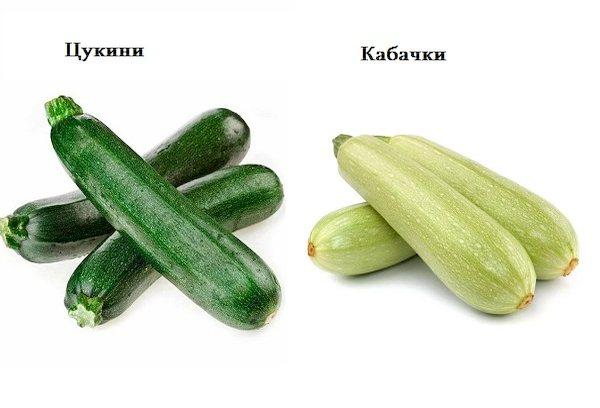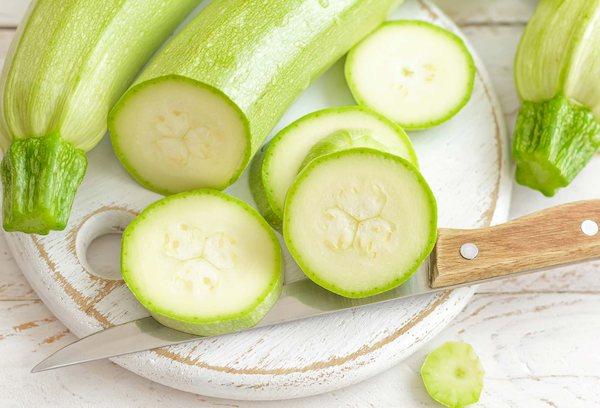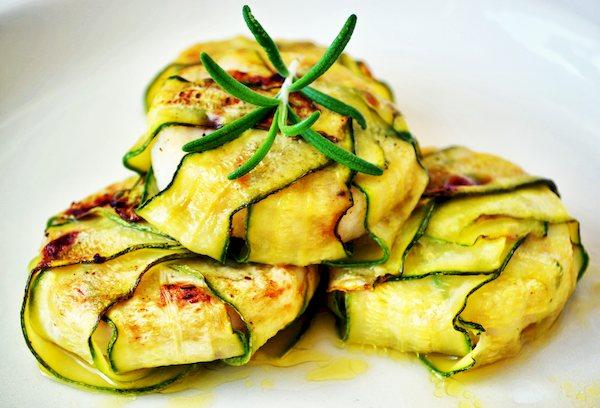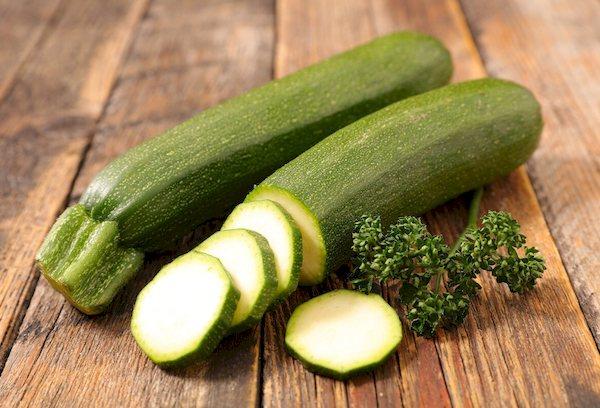What is the difference between zucchini and zucchini?
When the task is to prepare a culinary masterpiece, it is important to understand the difference between zucchini and zucchini. External differences are obvious: regular zucchini is almost always larger, light green, with a simple vegetable taste. Zucchini is a diminutive name for pumpkin (in Italian “zucca”). Zucchini fruits are about 15 cm long, with a bright grassy skin and white, delicate, sweetish pulp.
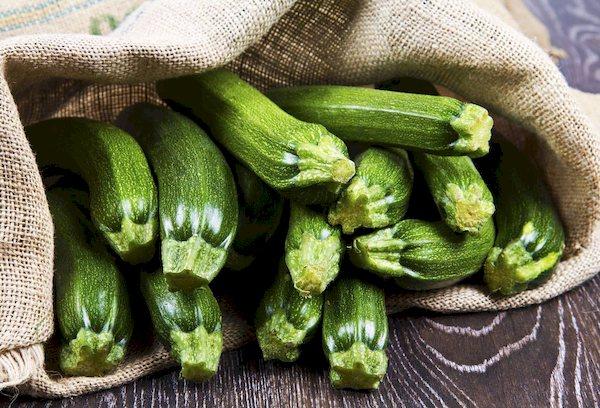
How to distinguish zucchini from zucchini?
Before we talk about the difference between zucchini and zucchini, it’s worth clarifying:
Zucchini is a variety of squash first described by Italian plant breeders in 1901. Both plants belong to the Cucurbitaceae family.
Both the bushes and the fruits of zucchini are noticeably different from the white-fruited, “regular” zucchini. What differences are the first to catch your eye:
- Zucchini fruits are smaller and rich green in color.
- They are sweeter, more tender, and edible raw.
- The seeds are poorly formed, the skin does not become rough for a long time, which is why the keeping quality of zucchini is much better.
- They are often ribbed.
- The skin is not spiny, without hard pubescence.
- The plants are more compact due to weak branching and have larger, more beautiful leaves on long petioles.
- More female flowers mean the yield is 2-4 times higher.
- Ripens later, but fills faster.
- It is thermophilic.
Difference in photo:
Comparison in the table:
| Zucchini | Regular zucchini | |
| Color | dark green, less often yellow or striped | light green |
| Length | 12-20 cm, sometimes 25 cm | from 15 cm to 50 cm and longer |
| Taste | neutral, sweetish | neutral, vegetable, slightly tart |
| Skin | thin, smooth and soft, edible
|
varies in thickness and density, may be prickly |
| Pulp | juicy, tender, slightly crispy;
the core is creamy. |
medium juiciness and density;
the core has soft seeds that quickly ripen and thicken. |
| Popular dishes | Italian pasta;
salty and puff pastries; casseroles, gratin; cream soup; chocolate pies, muffins, cakes; breaded fried flowers; spring rolls, chips and other snacks |
fried zucchini;
zucchini pancakes; zucchini cake; squash caviar; grilled vegetables; all kinds of stews; pickled zucchini. |
The characteristics of zucchini depend on the variety and may differ from those shown in the table.
Zucchini - what is it and what is it eaten with?
In their homeland, Italy, zucchini ripens when the heat is still unbearable. They are wonderfully refreshing. Housewives do not need to stand at the stove for a long time to prepare lunch or dinner. Zucchini is cut into thin ribbons and slices, grated on a coarse grater, and in this form added to cold summer pastas, salads, and snacks.
Young small zucchini are eaten without heat treatment.
They taste good, juicy, more like cucumbers than regular zucchini. To add richness, already chopped zucchini is mixed with onions or mint and sprinkled with lemon juice. After 20-30 minutes of marinating, the vegetable becomes very piquant and even more tasty.
What does zucchini go with:
- Feta cheese, Parmigiano, ricotta;
- Cherry tomatoes;
- lemon;
- fresh mint, basil;
- celery stalks;
- pesto sauce;
- anchovies;
- sesame;
- olives and olive oil.
Unusual about ordinary zucchini
It’s hard to believe, but for a long time only zucchini seeds were eaten. After the 16th century, it came from America to Europe and was grown mainly in botanical gardens. After the 18th century, zucchini became popular as a vegetable.
Interesting Facts:
- There are many varieties of zucchini with yellow, green and almost black skin, with stripes and specks, of different shapes, sizes, and tastes.
- The Beloplodny group, characterized by high productivity, is rich in varieties that were obtained by crossing with zucchini (Rolik, Belogor F1, Beloplodny, Yakor, etc.).
- Most varieties have hard pubescence on the leaves, stems and sometimes fruits. It is recommended to wear gloves when harvesting, and cut off the prickly skin for dishes.
- All types of zucchini are better digestible and have the best taste when young.
- The calorie content of the vegetable is 27 kcal per 100 g. The fruits contain a lot of potassium, iron, vitamins C, B1, B2 and B6, PP, carotene.
- Stewed squash pulp is recommended for baby food and the diet of convalescent patients. It has a beneficial effect on digestion and helps strengthen the immune system.
Question answer
Which is correct, zucchini or zucchini?
The option with one letter “k” is considered correct. This spelling is recorded in the most authoritative dictionary today, “Russian Spelling Dictionary of the Russian Academy of Sciences,” edited by V. V. Lopatin. Despite this, both options are found equally often, including on seed packages.
Which is healthier?
The difference in the benefits of zucchini and zucchini is small. The Italian relative is lower in calories (contains 16-24 kcal). When eaten with the peel, more vitamins are retained, in particular vitamin C.But at the same time, zucchini is also rich in cobalt and silicon, which promote the production of collagen and the metabolism of fatty acids (help preserve beauty and youth).
Zucchini began to appear in Russia in the 1980s. Although they have not replaced ordinary white-fruited zucchini, they are also very much loved. Many people use them in the same way with their usual variety of vegetables, without seeing much difference in taste. Gourmets and those who prepare original chocolate muffins with zucchini or Italian mint paste can distinguish the differences in taste.
